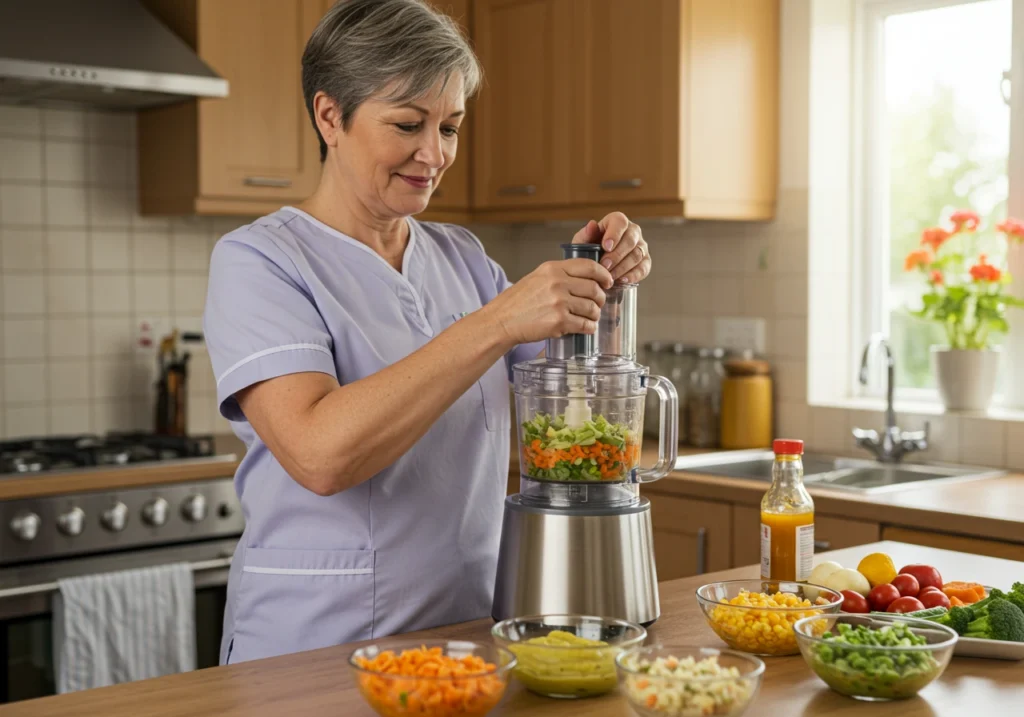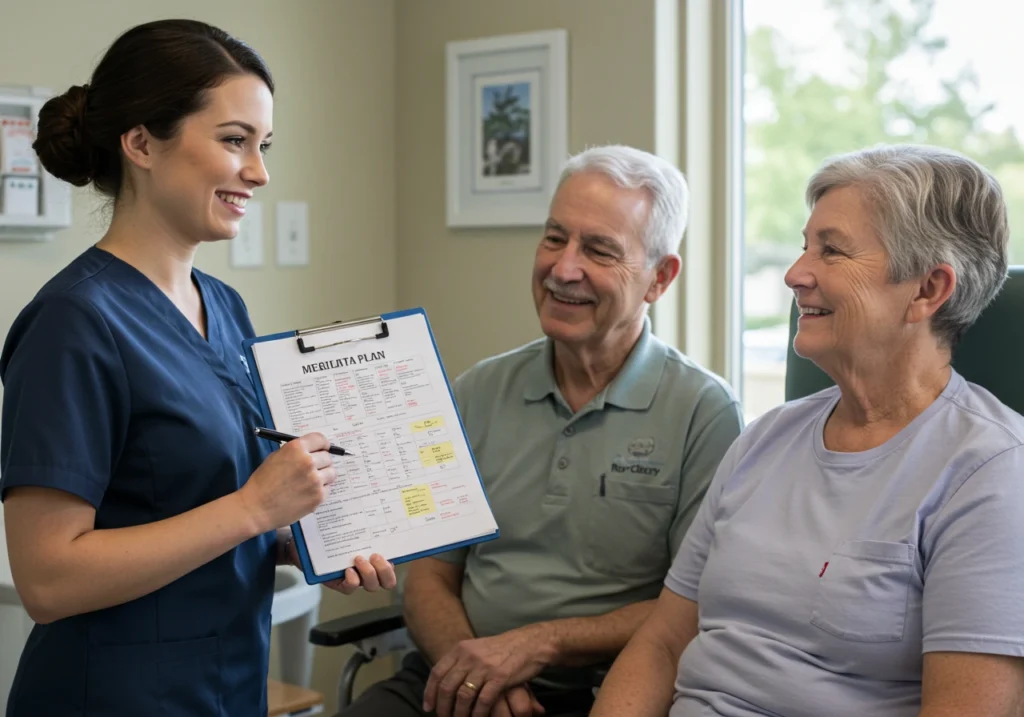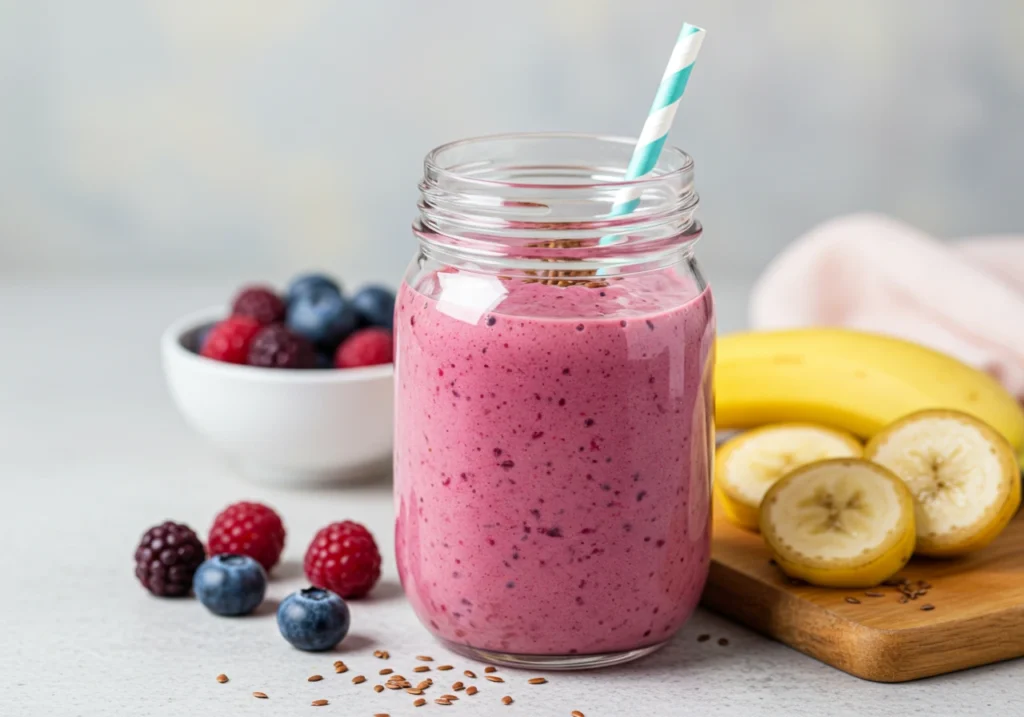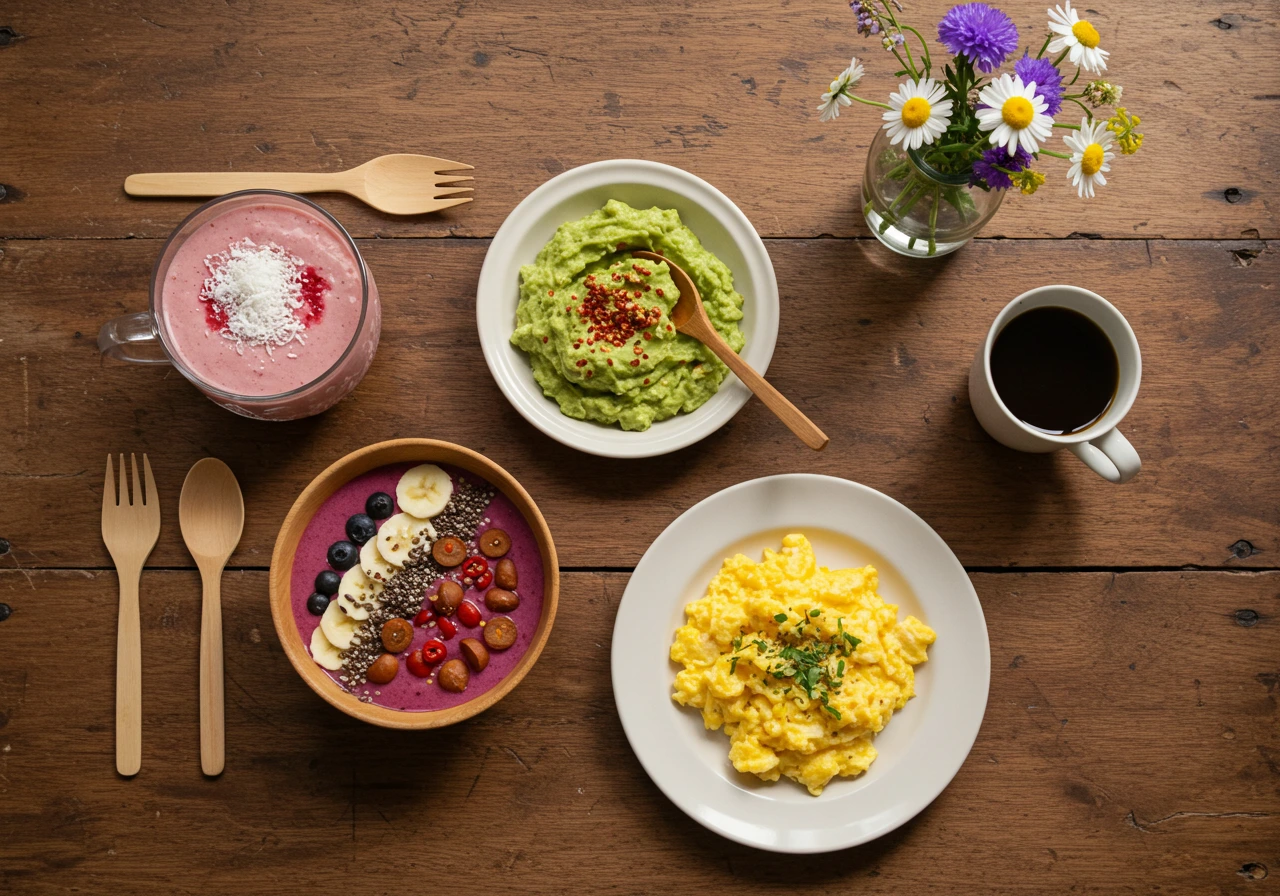Introduction
Eating well with ALS (Amyotrophic Lateral Sclerosis) is no walk in the park, but it’s far from impossible. In fact, a proper recipe for ALS patients can drastically improve quality of life. We’re talking real, hearty meals — not bland hospital food. Whether it’s dealing with trouble chewing, swallowing, or simply needing more calories in smaller bites, the key lies in well-thought-out nutrition.
This guide is designed to be a lifeline — both for caregivers and those living with ALS. From nutrient-dense smoothies to spoon-soft dinners, we’ll walk you through tailor-made dishes, food prep tips, and easy tricks that turn ordinary meals into daily doses of comfort and vitality. And guess what? I’ve tried a few of these recipes myself — they’re not just functional, they’re actually tasty.
Part 1: Understanding the Nutritional Needs of ALS Patients
Why Nutrition Matters in ALS Meal Planning
ALS can feel like it turns everything upside-down, but nutrition still holds the steering wheel. As the disease progresses, muscles weaken — not just in arms and legs, but in the throat and diaphragm, too. That makes chewing and swallowing tough cookies to crack. To top it off, patients often burn calories faster due to increased metabolic demands — even if they’re moving less. So, staying nourished? That’s not optional. It’s essential.
Nutrition in ALS is like fuel in a high-performance engine that’s working overtime. Every sip and every bite needs to count. A well-crafted recipe for ALS patients isn’t just about taste — it’s about packing in protein, fats, vitamins, and hydration in a way that’s both enjoyable and easy to consume.
Common Nutritional Challenges in ALS Patients
Let’s call it what it is — eating with ALS is a daily challenge. But identifying these hurdles helps clear the path forward:
- Dysphagia (swallowing difficulties): Perhaps the biggest concern. Thin liquids can cause choking; solids are harder to chew.
- Unintended weight loss: ALS increases caloric needs, yet decreased appetite and muscle loss mean patients often drop pounds fast.
- Fatigue during meals: Eating can be exhausting. Holding a fork, chewing, and staying upright can drain energy quicker than you’d think.
- Digestive discomfort: Constipation and bloating can tag along, partly due to lower mobility and poor hydration.
That’s why recipes must be tailored with love and logic — nutrient-packed, energy-rich, and soft in texture.
The Role of a Registered Dietitian in ALS Nutrition
Here’s a golden nugget: working with a dietitian isn’t a luxury — it’s a game-changer. Dietitians who specialize in neurodegenerative conditions can help personalize meal plans. They balance caloric needs, suggest nutrient-dense substitutions, and recommend thickeners or purees when necessary.
Many caregivers are already juggling a million hats. Having a pro on your team lightens the load, reduces stress, and ensures meals are doing their job — fueling, healing, and even comforting.
Also, let’s not forget emotional wellbeing. Sharing a meal is one of life’s simple joys. And making sure that recipe for ALS patients hits the spot both nutritionally and emotionally? That’s part of the healing too.
Part 2: High-Calorie and Easy-to-Swallow Recipes
Let’s talk food — real food. When it comes to finding the right recipe for ALS patients, it’s all about balance. The magic formula? High-calorie, soft, and nutrient-dense meals that glide down easily. In this part, we’ll roll out comforting breakfast, lunch, dinner, and snack ideas that nourish the body and soothe the soul. Spoiler: I’ve tried a few myself — and they’re delicious!
Breakfast Options recipe for ALS patients
Smoothies for a Nutrient-Packed Start
Starting the day strong is crucial, especially when dealing with fatigue. Smoothies are a goldmine — they’re smooth, versatile, and oh-so-easy to tweak for individual needs.
Banana and Peanut Butter Smoothie
This one’s creamy, dreamy, and protein-packed.
Ingredients:
- 1 ripe banana
- 2 tablespoons natural peanut butter
- 1 cup whole milk (or oat milk)
- 1 tablespoon ground flaxseed
- 1 teaspoon honey (optional)
Instructions:
Blend everything until silky smooth. Serve slightly chilled — or warm it slightly if cold liquids are a no-go. You can add a scoop of protein powder for an extra boost. Trust me, it’s like drinking a milkshake that loves you back.
Berry and Greek Yogurt Smoothie
Tangy, colorful, and loaded with antioxidants.
Ingredients:
- ½ cup blueberries
- ½ cup strawberries
- ½ banana
- ½ cup full-fat Greek yogurt
- ½ cup water or milk
- 1 teaspoon chia seeds
Instructions:
Blend it all together until it’s smooth as velvet. Add more liquid to adjust the consistency. Berries not only add flavor but also bring in powerful brain-loving nutrients.
Soft Scrambled Eggs with Avocado
Soft scrambled eggs are a staple for a reason — they’re protein-rich and slide down easily.
Here’s the twist: whisk eggs with a dash of cream for fluffiness. Cook them low and slow until just set. Then top with mashed avocado (add a little olive oil to make it smoother) and a pinch of soft cheese like goat cheese or cream cheese.
You’ve got a powerhouse breakfast with healthy fats, protein, and antioxidants all in one soft, easy-to-swallow meal.
Lunch Ideas recipe for ALS patients
Creamy Tomato Soup
This is comfort in a bowl, and yes — it’s perfect for those with swallowing issues. Rich, velvety, and bursting with lycopene, this soup nourishes while soothing.

Ingredients:
- 2 cups canned crushed tomatoes
- 1 cup vegetable broth
- ½ cup heavy cream
- 1 clove garlic, minced
- 1 teaspoon olive oil
Instructions:
Sauté garlic in olive oil, pour in tomatoes and broth, simmer, then blend until smooth. Stir in the cream and season to taste. Bonus tip: Add a scoop of unflavored whey protein for an extra nutritional lift.
🧠 Learn more from this resource-packed guide at The ALS Association – Nutrition & Easy Recipes
Chicken and Rice Casserole
Soft, hearty, and nostalgic, this casserole is a protein-rich hug on a plate.
Ingredients:
- 1 cup cooked shredded chicken
- 1 cup cooked white rice
- ½ cup cream of mushroom soup
- ¼ cup full-fat milk
- ¼ cup grated cheddar cheese
Instructions:
Mix all ingredients in a baking dish. Bake at 350°F for 20 minutes until bubbly. If needed, blend into a soft mash. It’s savory, filling, and oh-so satisfying.
Dinner Suggestions recipe for ALS patients
Macaroni and Cheese with Added Protein
Classic mac gets a makeover.
Ingredients:
- 1 cup elbow macaroni (cooked very soft)
- ½ cup shredded sharp cheddar
- ¼ cup full-fat milk
- 2 tablespoons cottage cheese or Greek yogurt
- Optional: 1 scoop unflavored protein powder
Instructions:
Mash all ingredients together into a silky mix. The cheese melts into a gooey dream. Use a blender if needed. It’s comfort food, upgraded for strength and softness.
Shepherd’s Pie with Soft Vegetables
Layers of mashed goodness with a savory surprise.
Ingredients:
- ½ pound ground turkey or beef
- 1 cup mixed vegetables (steamed soft)
- 1 cup mashed potatoes
- 1 tablespoon olive oil
Instructions:
Cook the meat and veggies until soft, season gently, and layer under mashed potatoes. You can puree everything together if necessary. It’s deeply flavorful and easy on the throat.
Snack Options recipe for ALS patients
Hummus with Soft Pita Bread
Hummus is a great go-to — smooth, savory, and full of protein.
Try this: warm up soft pita and dip it in creamy hummus. Add a drizzle of olive oil and a sprinkle of paprika for flair. If chewing’s a challenge, skip the pita and go spoon-only — it’s just as satisfying.
Yogurt with Mashed Berries
Creamy yogurt meets juicy berries in this easy-peasy snack. Use full-fat yogurt, mash in some ripe blueberries or strawberries, and mix till it’s swirl-worthy. It’s gut-friendly and packed with antioxidants.
Part 3: Tips for Preparing Meals recipe for ALS patients
Creating the right recipe for ALS patients isn’t just about choosing the right foods — it’s also about how you prepare them. Texture, calorie density, and digestibility matter more than ever. In this section, we’re diving into tried-and-true techniques to make food not just nutritious, but easier — and safer — to consume.
Modifying Food Textures for Easier Swallowing
Let’s face it — when swallowing becomes a chore, even the most delicious dish can feel like a challenge. That’s where texture modification comes in. For those dealing with dysphagia, changing the way food feels and flows can prevent choking and make meals more enjoyable.

According to the Muscular Dystrophy Association, soft, smooth, and moist textures are safest. So instead of crunchy toast, go with mashed sweet potatoes. Instead of raw carrots, try a carrot puree or even soup.
Pureeing Techniques
Ah, the blender — your new best friend in the kitchen.
To puree meals properly:
- Cook ingredients thoroughly (this softens them and boosts flavor).
- Add small amounts of liquid — think broth, milk, or even gravy — to get a smooth, pudding-like consistency.
- Use a high-speed blender or food processor to break down the food completely.
- Strain if needed, especially to remove seeds, skins, or fibrous bits.
For example, shepherd’s pie can be pureed into a single smooth bowl of creamy, meaty goodness. It’s delicious, comforting, and absolutely safe to swallow.
🧠 For more on this, check the ALS Association’s Pureeing Guide.
Using Thickeners
On the flip side, thin liquids — like water, juice, or broth — can easily “go down the wrong pipe.” To slow them down and make them safer to swallow, thickeners are your best bet.
Options include:
- Commercial thickeners (like xanthan gum-based powders)
- Natural add-ins like mashed banana, avocado, or cooked oats
- Instant pudding powder
It’s all about consistency — aim for a honey or pudding thickness, depending on individual needs. Always test with a spoon: it should hold its shape without being too stiff.
📘 Read more on food safety with thickeners from the Muscular Dystrophy Association

Enhancing Caloric Intake Without Increasing Volume
When swallowing is limited, smaller portions must do more heavy lifting. That’s where energy-dense nutrition swoops in to save the day.
Incorporating Healthy Fats
Fat is your flavor friend — and it’s an effortless way to add calories. We’re talking heart-healthy options that don’t alter texture too much:
- Drizzle extra-virgin olive oil over pureed veggies
- Add nut butters to smoothies and cereals
- Blend avocado into yogurts and spreads
- Stir coconut cream into soups or curries
These additions boost both taste and calories — without making meals bigger or harder to swallow.
Adding Nutritional Supplements
Sometimes, real food needs a little backup. That’s where nutritional supplements step in.
- Powdered protein (unflavored whey or plant-based options) easily blends into soups, smoothies, and casseroles.
- High-calorie shakes or drinks like Ensure or Boost offer balanced nutrition in sip-sized servings.
- Vitamin-fortified oils can increase calorie intake without overwhelming flavor.
Part 4: FAQs on Recipe for ALS Patients
Got questions? You’re not alone. Whether you’re a caregiver, a patient, or just someone who wants to help, these answers aim to untangle the daily complexities of eating with ALS. Let’s clear the air around common concerns — and bust a few myths along the way.
What are the best high-calorie foods recipe for ALS patients?
When every bite matters, you need foods that pack a punch. The best high-calorie options are those that deliver energy without adding bulk or being tough to chew. Think:
- Full-fat dairy (cheese, yogurt, milk)
- Avocados
- Nut butters
- Olive oil
- Eggs
- Smoothies with protein powder
- Cream-based soups
Soft and creamy is the name of the game. You can easily blend these into meals or snacks, and they help prevent unintentional weight loss — a big concern in ALS management. Plus, they’re flavorful and customizable, which makes eating more enjoyable, not just functional.
How can I make meals easier to swallow for someone with ALS?
Ah, the million-dollar question. The answer? Modify textures before they hit the plate. For starters:
- Use a blender to create smooth purees
- Add thickeners to liquids so they don’t go down too fast
- Choose soft foods like mashed potatoes, puddings, or well-cooked grains
- Avoid dry or crumbly textures — they’re harder to manage
Also, don’t rush meals. Allow time for small bites, and try eating in an upright position. Safety is everything, and swallowing-friendly meals can reduce the risk of choking while still offering enjoyment.
🧠 Check out practical guides from Your ALS Guide for real-world strategies that work.
Are there specific foods to avoid recipe for ALS patients?
Absolutely. While everyone’s different, certain foods tend to be more problematic — either due to choking risks or digestion issues. These include:
- Dry crackers or crusty bread
- Hard raw vegetables
- Thin liquids like water or broth (unless thickened)
- Sticky foods like peanut butter (unless blended in)
- Seeds, nuts, and stringy meats
It’s not about limiting variety — it’s about adapting textures and finding safe substitutes. Steamed carrots instead of raw. Mashed fruits instead of whole. You get the idea. The goal is comfort, safety, and taste, all rolled into one.
How can caregivers assist with meal preparation recipe for ALS patients?
Caregivers are the unsung heroes of ALS nutrition. Here’s how they can make a big difference:
- Plan meals ahead of time using ALS-friendly recipes
- Use kitchen gadgets like blenders, food processors, and adaptive utensils
- Monitor calorie and fluid intake
- Stay educated — follow resources like the ALS Association’s nutrition page
- Observe signs of swallowing difficulty and adjust textures accordingly
Even just sitting and sharing a meal can help patients feel more supported. It’s not just about the food — it’s the love that goes into every meal that truly nourishes.
What role do nutritional supplements play in ALS care?
Sometimes food alone can’t do it all. Enter supplements — handy tools in your nutritional toolkit.
- Protein powders can be blended into smoothies or soups
- Calorie-dense drinks (like Ensure or Boost) offer energy in small volumes
- Multivitamins help fill nutrient gaps
- Electrolyte powders can support hydration and muscle function
But here’s the kicker — always consult a dietitian first. Supplements aren’t one-size-fits-all, and getting the dosage or timing wrong can mess with medications or cause stomach issues.
✅ For detailed recommendations, visit the ALS Association’s official guide
Can ALS patients dine out safely, and what precautions should be taken?
You bet they can — it just takes a little planning.
Tips to dine out safely:
- Check menus in advance for soft food options
- Bring your own utensils if adaptive tools are needed
- Choose quiet environments to avoid distractions during meals
- Avoid buffets — portion control and hygiene can be tricky
- Don’t hesitate to ask the kitchen to blend or modify dishes
Dining out is still possible — even joyful. Just remember, it’s okay to advocate for your needs. Most restaurants are happy to accommodate when you explain the situation.
Part 5: Conclusion — Personalized Nutrition Is Powerful Care
When it comes to ALS, food isn’t just fuel — it’s a lifeline. A thoughtful recipe for ALS patients ptients can support strength, ease swallowing, and offer a daily dose of comfort and control in an otherwise unpredictable journey. While challenges around eating may evolve, the approach to nutrition must remain steady: personalized, proactive, and deeply human.
Emphasizing the Importance of Personalized Nutrition Plans
There’s no one-size-fits-all solution. What works for one person may not work for another — and that’s okay. That’s why tailoring nutrition to individual needs is absolutely essential. From adjusting textures to maximizing calories in small servings, personalized plans are the cornerstone of compassionate, effective care. And let’s be honest, good food doesn’t just nourish the body — it nurtures the soul.
Meals can still be enjoyable, empowering, and something to look forward to. The key lies in flexibility, creativity, and a touch of love in every bite.
Collaborating with Healthcare Professionals
Nobody should navigate ALS nutrition alone. Dietitians, speech-language pathologists, and neurologists are your MVPs when it comes to building safe, effective eating strategies. They can guide food choices, recommend supplements, and tweak plans as swallowing abilities change.
Working closely with these professionals helps minimize complications — like choking or malnutrition — and improves overall quality of life.
Monitoring and Adjusting Dietary Needs Over Time
As ALS progresses, so do nutritional needs. That’s why ongoing monitoring is vital. Appetite, weight, energy levels, and even mood can signal when it’s time to adjust your approach.
Regular check-ins with the care team ensure the plan remains relevant and realistic. Whether it’s switching to purees or introducing a feeding tube, these decisions should always be guided by comfort, dignity, and the patient’s voice.


